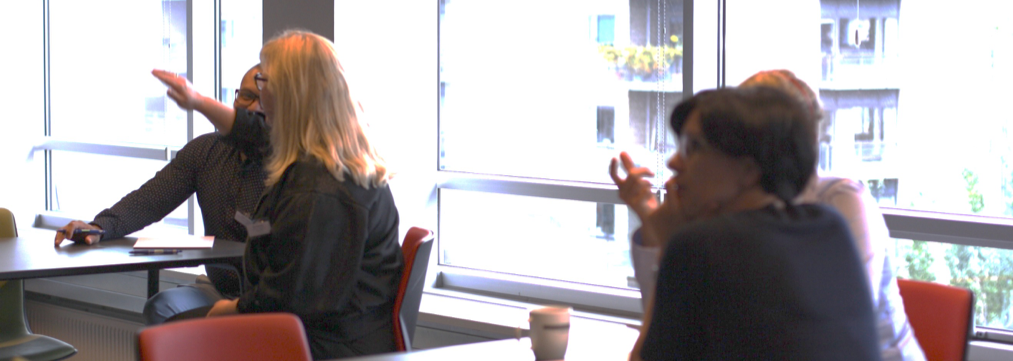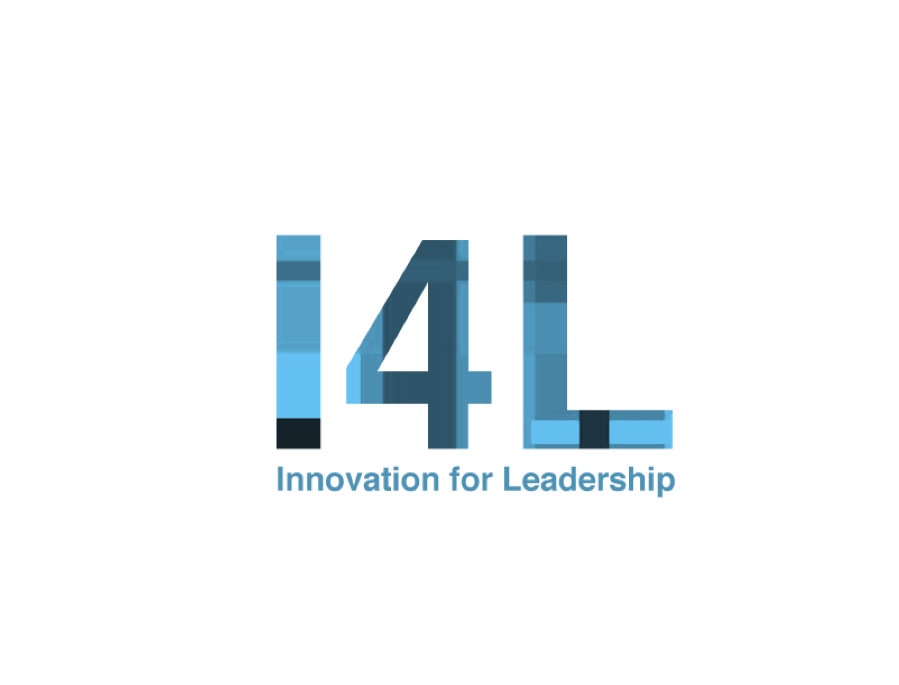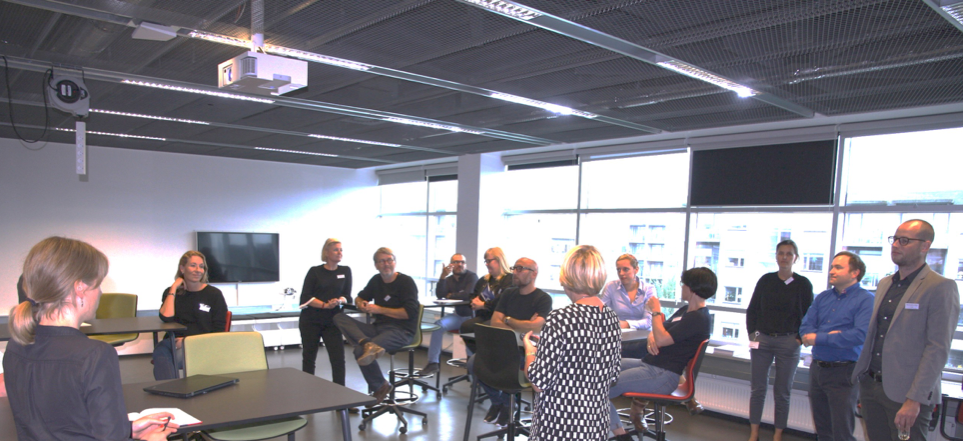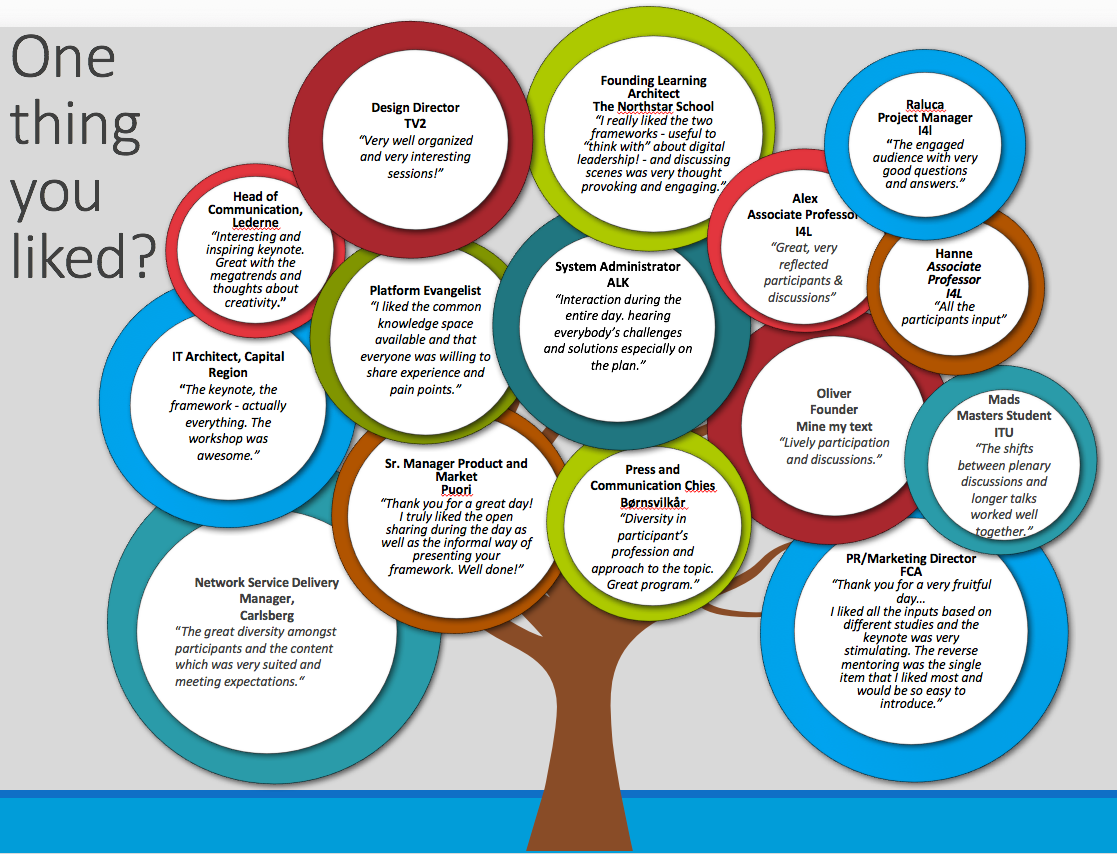This article presents a few practical examples of how to be “kind” in digital communication practices as a leader, and the impact it has on employees.

A few months have passed by since our first workshop: ”Digital Leadership and Communication”. In this article, we will take a closer look at the impact of the workshop and the evolution of participants’ stances on communicative leadership specifically – the kindness factor.
These workshops are impactful and tailor-made to suit the needs of these leaders involved, but what makes the “I4L – Innovation for Leadership” project truly special is that it engages with participants beyond the workshops, ensuring adoption of research-supported methodologies in work practices long after workshops have concluded.
Embracing a New Digital Reality, Together
There are many benefits to joining the I4L Community. More than sustained involvement after workshop completion, we provide opportunities to build relationships not only with researchers and students at the forefront of Digital Transformation studies but also with other leaderships across a multitude of industrie, all looking to respond to the fast-pace of digitalization impacting the labor force.
We need to focus on the digital part of reality, because the world is becoming bigger. If Denmark is going to be in front of that, we need to become much better at the digital, than we are today.
–Participant in our first workshop: Digital Leadership and Communication
I4L exists to connect academia with the frameworkshops and methods practitioners are yet not exposed to in their work life, while simultaneously allowing for practitioners to reciprocate, informing academia of the realities these new developments present. This exchange enables a mixed approach to digital leadership and is vital and unique to the project.
Among some of the feedback we have received after the workshop, was that the tools provided and the reflection space, has helped leaders to not only receive information, but also enabled them to take actions.
But these insights and knowledge exchanges are not available only to workshop participants. Leaders can also request membership to our I4L Community and join the conversation there.
Follow-up Interviews: Workshop Impacts in Practice
One of the leaders stated that after the workshop he became more conscious about how he uses digital communication tools.
When I’m not using (Digital Communication Tools) for a meeting, I’m using them to engage. Knowing the person in the other end, instead of just having the meeting and getting stuff done.
You need to engage (digitally) the same way you engage with someone in a (face-to-face) interaction.
-A leader on the impact of change engagement practices after our first workshop
Another leader presented the tool she was provided with in a series of meetings with her team and the teams she is interacting with on a regular basis: “And I think now because there hasn’t been so much focus on it in our team, or in our whole department (…) There was a lot to discuss and it was a lot to improve on.”
The Kindness Factor
During the workshop, leaders discussed several action points that they would like to work on, and some reported their progress. For example, one of the leaders mentioned they will work on the “kindness factor”. After two months, we interviewed the leader to learn more about it:
Q: One of the things you wanted to work on was something you called the “kindness factor”, and you also explained that due to your technical background you had a tendency to give too many technical details, and that you’d like to work on that. I wanted to hear how did that go?
A: Well, let’s put it this way, it’s very hard to do that, but I think I moved away from the very deep technical interaction into a more strategic approach in the work that I do. You can’t go to the CEO and tell him about the technical details. He will just look at you and go blank… And looking at it from an internal perspective I moved from having too much saying in to what the developers do and how. I still come up with suggestions, but it’s more the why we are doing stuff, like what are the issues we are solving, not how we solve it. I leave it up to them. So, improving on it, I’m not perfect, but getting there.
Q: That’s great! Do you have any examples that come to your mind, when you mention the kindness factors, and the way you communicate digitally?
A: Definitely! I usually write a text, and then I delete it, and then I say “Hi, how are you, how does it go?”, and then I paste it in again. So, I do that every day, and I’ve done that since the workshop, and it has actually worked out quite well.
Q: Tell me more about it! So how is it working quite well? Do you get different responses from people?
A: I don’t know! I get a different interaction, but I think the response is the same. I’ve been refraining from doing so, because it can seem impersonal to me: you don’t ask because you want to know, you’re asking because that is the code of conduct, right? I don’t like that. I want to ask because I want to know. So, yes, sometimes I get a different response, because I do it with people I didn’t used to, and who are not accustomed to that type of interaction, but I think that the way I worked with people has changed, because of this. I at least feel I can get more done, and have a certain amount of slack that you can work with, and it grows, the more personal interaction you have with people.
Q: This is fantastic. So, do you feel that the performance has kind of increased, because you have a higher level of connection with people?
A: Well, I’m not saying that performance has changed, because it’s the same people. They have their skill-set and that is not going to change because of me being kind to them. But you can have another level of leverage by being kind, and you can ask people to do more, because they will automatically want to do more and contribute more, when you are kind.
This article shows an insight into how digital communication practices that convey care and kindness, and are attuned to the person we are communicating to, has a positive impact on the interaction.
Are you interested in applying to participate in our next workshop on Transformational Leadership and Disruptive Innovation, then learn more and apply here.
To stay updated on our research insights and news about our next workshops, remember to subscribe to our newsletter and follow us on Twitter @i4l_dk.







 Data changes our fairy tales – Think of how Hansel and Gretel could’ve checked Trip Advisor and the bad recommendations would’ve kept them away from the witches’ candy hut.”
Data changes our fairy tales – Think of how Hansel and Gretel could’ve checked Trip Advisor and the bad recommendations would’ve kept them away from the witches’ candy hut.”


